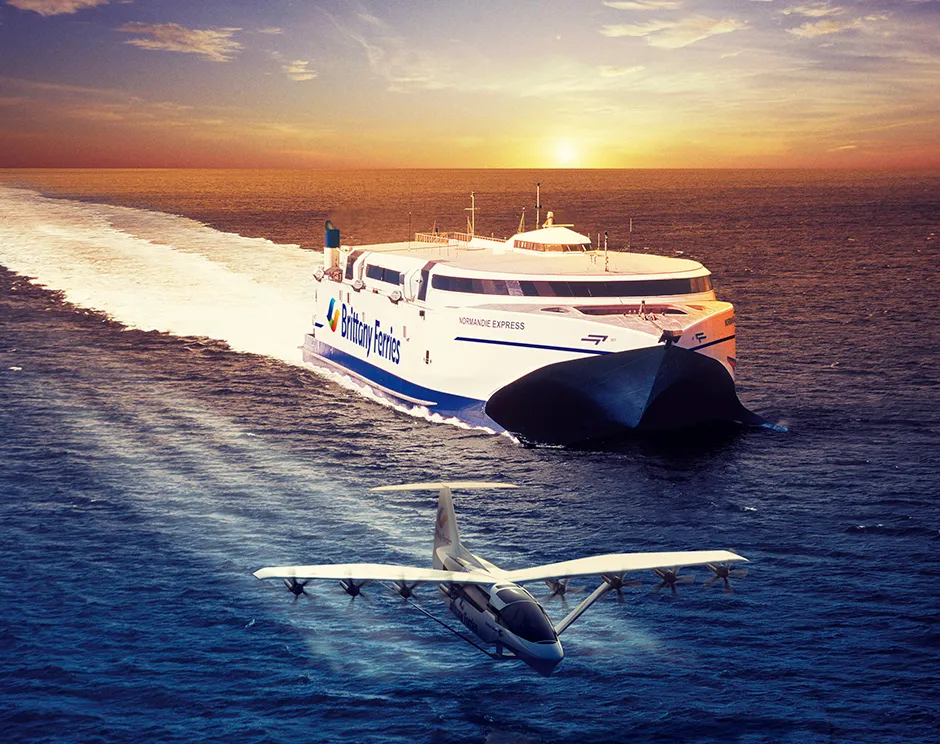Sea-skimming “flying ferries” could slash journey times for cross-Channel sailings, a ferry operator has claimed.
Brittany Ferries announced it is collaborating with US-based start-up Regent Craft on developing zero-emission Seagliders.
The firm said the battery-powered craft, which it described as part-ship, part-plane, could be launched by 2028 and may reduce sailing times between Portsmouth and France from five hours by conventional ferry to 40 minutes.
Seagliders are being developed using technology known as wing-in-ground effect, which would involve riding on a cushion of air trapped between a wing and the surface, similar to how a hovercraft runs.
The top speed would be 180mph and “minimal power” would be needed to move hundreds of passengers, according to Brittany Ferries.
Read more about the future of transport:
- The new age of the airship: Could blimps be the future of air travel?
- Self-driving cars coming to a slow lane near you, Government announces
- Inside the world’s first airport for drones and flying cars
The company acknowledged its plan for “flying ferries” will face “technical and regulatory challenges”, but insisted that “shouldn’t be a barrier to developing a promising, sustaining technology”.
It is advising Regent Craft on practical issues involved in running fast craft due to its experience with the high-speed catamaran Normandie Express.
Brittany Ferries’ ports and operations director Frédéric Pouget said: “We are particularly pleased to contribute now because it means we can bring real-world challenges and potential applications into the company’s early thinking.
“We hope this may help bring commercial success in the years that follow. Who knows, this could well be the birth of ferries that fly across the Channel.”

Regent Craft co-founder Billy Thalheimer said: “We are excited to partner with Brittany Ferries to bring the future of maritime transportation to market.
“Brittany Ferries offers world-class operational experience which will help us ensure that seagliders will be the most convenient and comfortable form of cross-Channel travel.”
Reader Q&A: Can boats sail faster than the wind propelling them?
Asked by: David Powell-Evans, Wimbledon
Yes, although it sounds implausible.
With the wind blowing from behind and sails perpendicular to the wind, a boat accelerates. The wind speed on the sail is the difference between the vessel’s forward speed and that of the wind.
Once the boat reaches the same speed as the wind it’s impossible to go any faster. But with the wind blowing from the front, the boat turns its sails into the wind by about 45°. The sails divert the wind slightly as it blows across them, which slows the wind and exerts a sideways force on the sail. The keel (the large fin that extends down beneath the hull) cancels out the sideways force.
But, if the sail is angled correctly, some of that force also drives the boat forward. The vessel continues to accelerate until that force is matched by the drag of the water. So, with clever streamlined hull designs a boat can sail faster than the wind.
Read more: